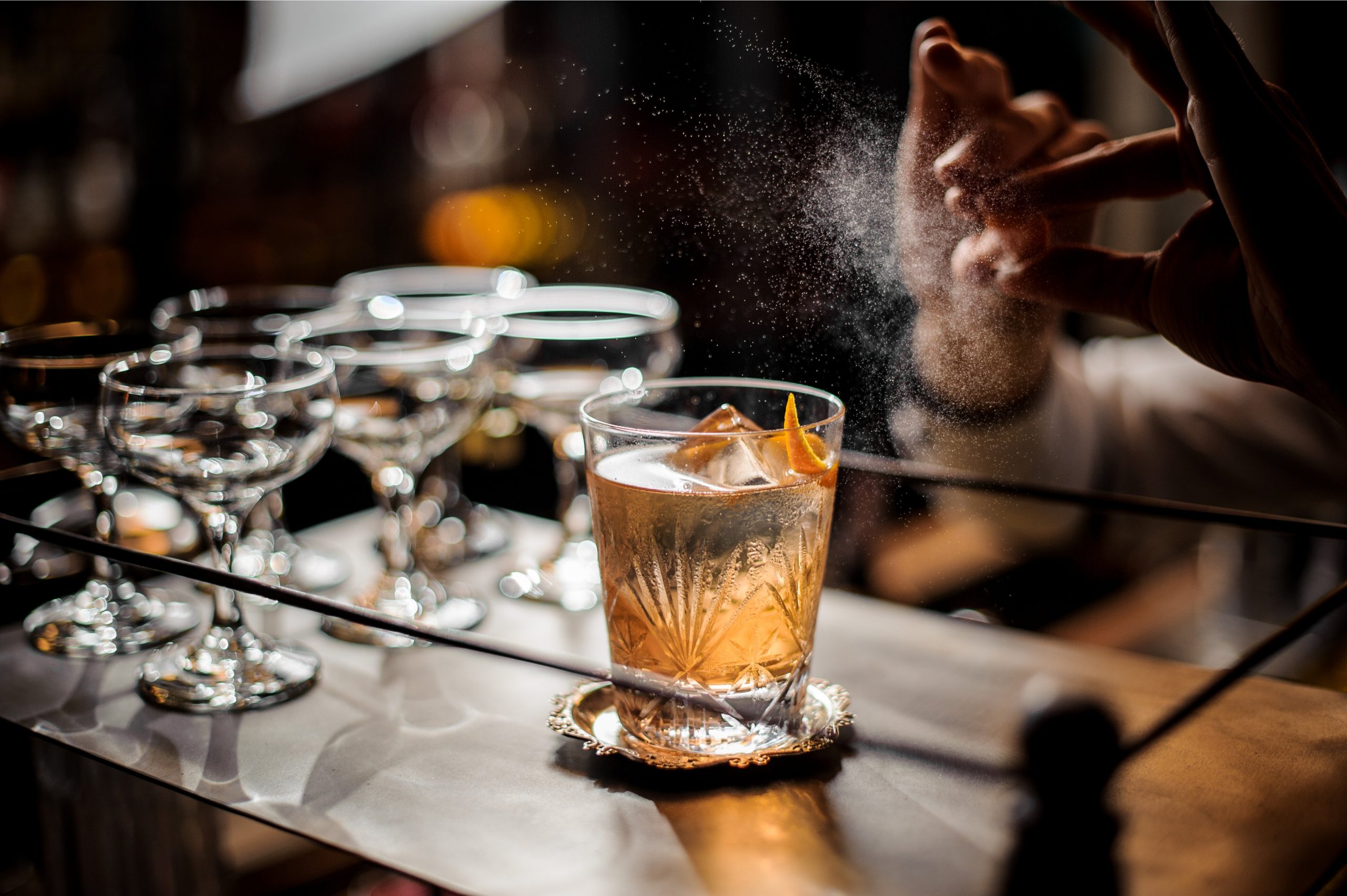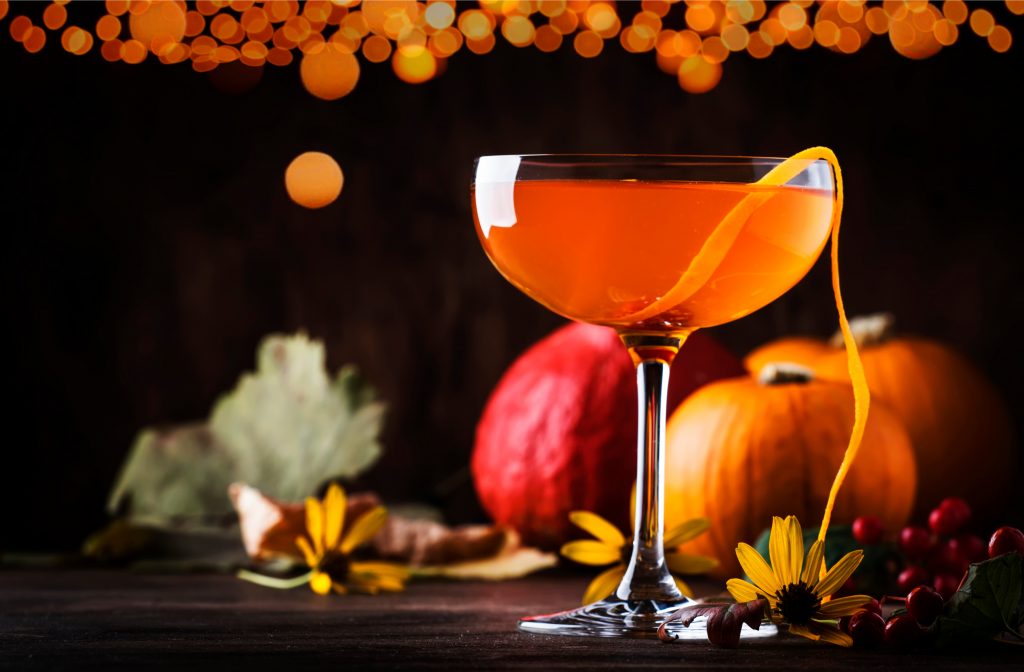
Vermouth Facts & Origin
If bitters are a bartender’s salt and pepper then vermouth is their most popular dressing. Vermouth is recognized as an essential ingredient in the Martini, the Manhattan, the Negroni, and many other classic cocktails. Sophisticated cocktails would not be complete (and maybe not even possible) without vermouth. Before cocktails came about, vermouth was drunk for medicinal purposes. The origins and existence of vermouth confuse many, and it is quite a mix of history and purposes.
What is Vermouth?
In a nut shell: Vermouth is a fortified wine, flavored with a variety of botanicals. The base wine can be either red or white, yet no dominant table wine grapes are used to make the base. The fortifying spirit is often a grape spirit. The flavoring botanicals used are wide spread and widely sourced. To sweet vermouth sugar, or sugar syrup is often added, as is caramel coloring. The wine is made and sometimes, but rarely, aged for a short while, then it is fortified, sweetened (if this is part of the recipe) then it is macerated with botanicals. This mixture is stirred intermittently and when deemed ready the vermouth is poured off for bottling. Finished vermouth comes out between 16%-18% alcohol by volume.

The History
Infusing herbs into wine for medicinal purposes has been done in Asia since as far back as 1000 BC. This is not the source of today’s vermouth. They arise from Europe, where the Greeks started producing infused wines for medicinal reasons. The popular ingredient in these infusions was wormwood. The Ancient Greeks believed that it could treat stomach issues and intestinal parasites.
Up until the 16th Century vermouth was mainly the above, a wormwood infused wine given for medicinal purposes. Indeed, the word vermouth itself comes from the French pronunciation of the German “Wermut,” meaning wormwood. It is an Italian man, who began producing this wormwood wine back in his home region of Piedmont, whom it could be said created what we call vermouth today. He took this wormwood wine idea and remade it at home, adding other botanicals in the process. Quickly other versions of this drink arose in Italy and South-Eastern France.
Two dominant styles of vermouth developed, one dry and white, the other sweet and red. Vermouth was drunk as a medicinal beverage until around the middle-end of the 18th Century. After this, it was being drunk as an aperitif by both the French and the Italians. With the advent of the cocktail, vermouth found another lease of life. Around the mid to late 19th century many of the classics we know today were invented. Initially these cocktails were vermouth heavy, sometimes calling for as much as double the amount of vermouth to the base spirit used in the cocktail.
Types of Vermouth

In the beginning there were two types of vermouth, white and dry or red and sweet. These were produced in France and Italy; both countries making both styles. However as commercialism has grown, the demand for new and different products are now a variety of vermouths out there. Spain, the United States, and the United Kingdom produce excellent vermouth. There’re three dominant styles of vermouth, however each style goes by one or two names, just to confuse us all!
Sweet
This vermouth is traditionally red wine based, although many are now using white wine- fortified, infused with botanicals, sweetened, and often with coloring added. Sweet vermouth is rich, spiced, herbaceous and used in Manhattans, Rob Roys, and negronis, many versions are too sweet to be drunk alone. (Also called Red, Rosso, and Rojo.)
Dry
Produced from white wine grapes, dry vermouth rarely has sugar added. It is floral, tart, herbaceous and, of course, dry. The base grapes give this vermouth sweetness, as does any aging the proprietor may apply to the wine before fortifying and infusing it. This style of vermouth is used in Martinis.
Blanc/Bianco
Blanc in France and Bianco in Italy this style is a sweeter dry vermouth. It is still made from white grapes, but will have sugar added. It often has more body and a different array of botanicals than dry vermouth. Depending on the producer these can be just off dry, or quite sweet, richer in body and flavor including in their recipe botanicals more often associated with sweet vermouth.

There’re also golden and rosé style vermouths out there, however they are next to impossible to find in the USA. You’ll have to head over to the homelands of vermouth in order to get your hands on a bottle of one of these.
It is worth noting that, like with all liquors and liqueurs, not all brands are created equal and that are some brands of vermouth that are considered superior to their competitors. But your liking and your needs may not align with others. Different vermouth can extenuate different elements of different cocktails and spirits.


1 Comment
Red wine can even help to reduce your body fat percentage! As red wine reduces the cholesterol level and removes all the fatty substances from your body thereby red wine cuts the fatty layers of the body and provides you with a healthy body, here for helping you to lose weight as well.
Write a Comment
Categories
Recent Posts
Popular Posts
Join thousands of other operators in receiving valuable weekly insights and cost-saving tips delivered straight to your inbox.
Subscribe to our blog!